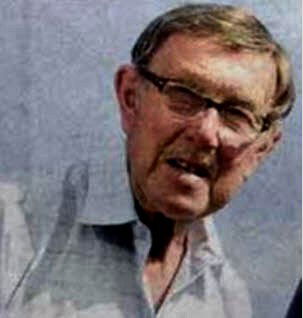The Keith Douglas Collection

Keith Douglas was known locally as “Mr Standish”. He did a huge amount to support his community. The history and heritage of Standish was his passion.
As a member of the Community Forum he was instrumental in creating a trail of heritage plaques which still grace historic locations in the area. He also collected historical information and pictures, and was a regular contributor to the Wiganworld website.
Keith, who was a retired chemistry teacher and lived on Cross Street, sadly passed away in 2016 at the age of 72. Keith left a legacy to be used to fund heritage projects in Standish including the QEII Platinum Jubilee monument.
His sister, Elaine, gave a collection of photographs to the local historian, Stan Aspinall. Stan has kindly passed them on so they can be viewed more widely. The collection also includes a guide to the Standish heritage plaques which Keith helped create.
We are delighted to publish the pictures and the guide here as a tribute to Keith – Mr Standish.
Market Place
Always at the centre of Standish life, the Market Place has evolved over the years. The well and stocks have been central features. The well canopy came and went at least twice but was finally restored in 1998. The biggest change was made in 1930 when a row of houses, which stood in front of the church, were demolished to open up Market Place and make it the impressive public space it is today.
Streets
Although there has been a huge amount of development in Standish since the 1990s, many of the streets around the centre of Standish have changed little since the 1800s. You should be able to recognise most of them.
Mining
Standish owes a lot of its growth to coal mining. There were many local pits over the centuries. The last, which was Robin Hill drift mine, closed in 1963. The pictures include Prospect Pit and some showing the construction of Robin Hill drift.
Rector Hutton
Charles William Newton Hutton was the rector of Standish Parish from 1886 until his death in 1938. As well as being the rector he had a finger in many lucrative pies. For example he was Chairman of the Bradley Manufacturing Company which ran the local mill. He appears to have enjoyed being in front of a camera. He was married twice but had no children. His second wife was the daughter of JB Almond the local brewer. She was 27 years younger than him, and the marriage was short lived.
Schools
Standish had one of the oldest grammar schools in Lancashire. It was founded in 1603 and stood on the corner of School Lane and Green Lane until it was demolished in 1968. A separate girl’s school was opened on Rectory Lane and that building remains largely intact as part of Bramley Court. The collection includes a picture of St Marie’s which stood towards the bottom of Almond Brook Road until it was demolished following closure in 1966, due to mining subsidence.
Standish Hall
Standish had its own Manor House for at least 800 years. Sadly the beautiful building which evolved over the centuries was largely demolished in 1923. What remained of it was fully demolished by the National Coal Board in the 1980s. The Hall was the seat of the Standish family; many members played a prominent part in history. Thankfully pictures exist that show us what the hall looked like. Some interior features from the hall were sold in the 1920s and survive to this day. The chimneypieces and panelling from three rooms are in the USA. The two gate lodges have also survived.
Pubs
As a mining community, Standish always had its fair share of pubs and of course a brewery. Some have not survived, some have been given a new purpose, and thankfully some are still open as pubs.
Miscellaneous
A collection of pictures of historic Standish landmarks.
Guide to Standish Heritage Plaques
Printed in 2010 the guide shows pictures of the original 12 plaques, their location, and the text contained on them.